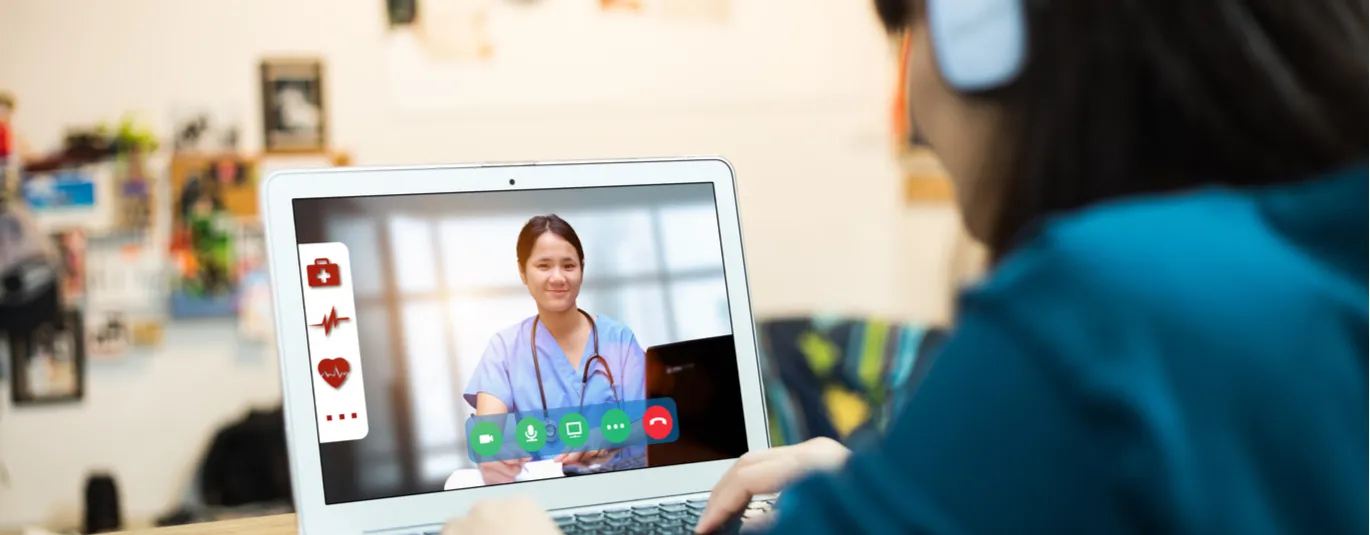

To slow the spread of COVID-19, many people across the country are getting medical care virtually. More than ever before, our members are connecting with their doctors over the phone or on video chat.At Blue Cross and Blue Shield of North Carolina, we’ve expanded virtual access to health care providers until July 31, 2020 in response to COVID-19. But if you’ve never used telehealth before, it may seem daunting.While some medical needs require an in-person visit, others work well with telehealth. We spoke with two physicians, Dr. Thomas Warcup of UNC Health and Dr. John Yeatts of Duke Health, to answer your questions.
WHAT IS TELEHEALTH?
Dr. Warcup: Telehealth is using a virtual platform to provide care. That can be telephone or video.
WHAT TYPES OF VISITS ARE GOOD CANDIDATES FOR TELEHEALTH?
Dr. Warcup: I would say any medical condition that doesn’t require a significant physical exam. It’s a great platform for diabetes, hypertension, depression, anxiety, a common cold. I think it works extremely well for an established patient relationship. It’s a very seamless way to communicate with patients.Dr. Yeatts: Providers can perform most of the same functions via telehealth that they can in the traditional office visit. We have access to patient records at the time of the visit just as we would during a normal office visit. Issues related to medications and their refills are great candidates.
HOW DOES A TYPICAL TELEHEALTH VISIT GO?
Dr. Yeatts: Sometimes there are some pre-visit forms to fill out. At Duke my medical assistant will call ahead before the visit starts. She’ll review medications and allergies with a patient, get a sense for what the patient wants to talk about, and then transfer to me. This type of encounter is usually between five to 10 minutes, all the way to 25 or 30 minutes long for more complex conversations.
WHAT WOULD YOU SAY TO SOMEONE WHO HAS NEVER USED TELEMEDICINE BEFORE OR WHO IS ANXIOUS ABOUT TRYING IT?
Dr. Warcup: I can’t stress enough the respect it has for the patient’s time. For someone who’s been doing it for nine to 10 years, I’ve never had patients comment anything other than they love it.Dr Yeatts: I think it’s an extremely effective alternative for a wide range of complaints and needs. Many folks, once they get used to that type of interface, actually like it quite a bit because of the ease of access.
WHY IS VIRTUAL CARE SO IMPORTANT RIGHT NOW?
Dr. Warcup: I think the virtual appointments allow us to preserve social distancing but still remain attached and provide continuity of care. Patients don’t have to neglect their ongoing current medical issues.Dr. Yeatts: I think this has been particularly helpful during the COVID pandemic by keeping people somewhat physically distant. Although we do our best to clean waiting rooms and exam rooms daily and take all the standard precautions, when people come into a busy waiting room or a clinic office, there are some risks of exposure. The telehealth platform mitigates much of that exposure by allowing the patient to receive care on par with what they would receive in person. They don’t have to leave the safety of their own home.